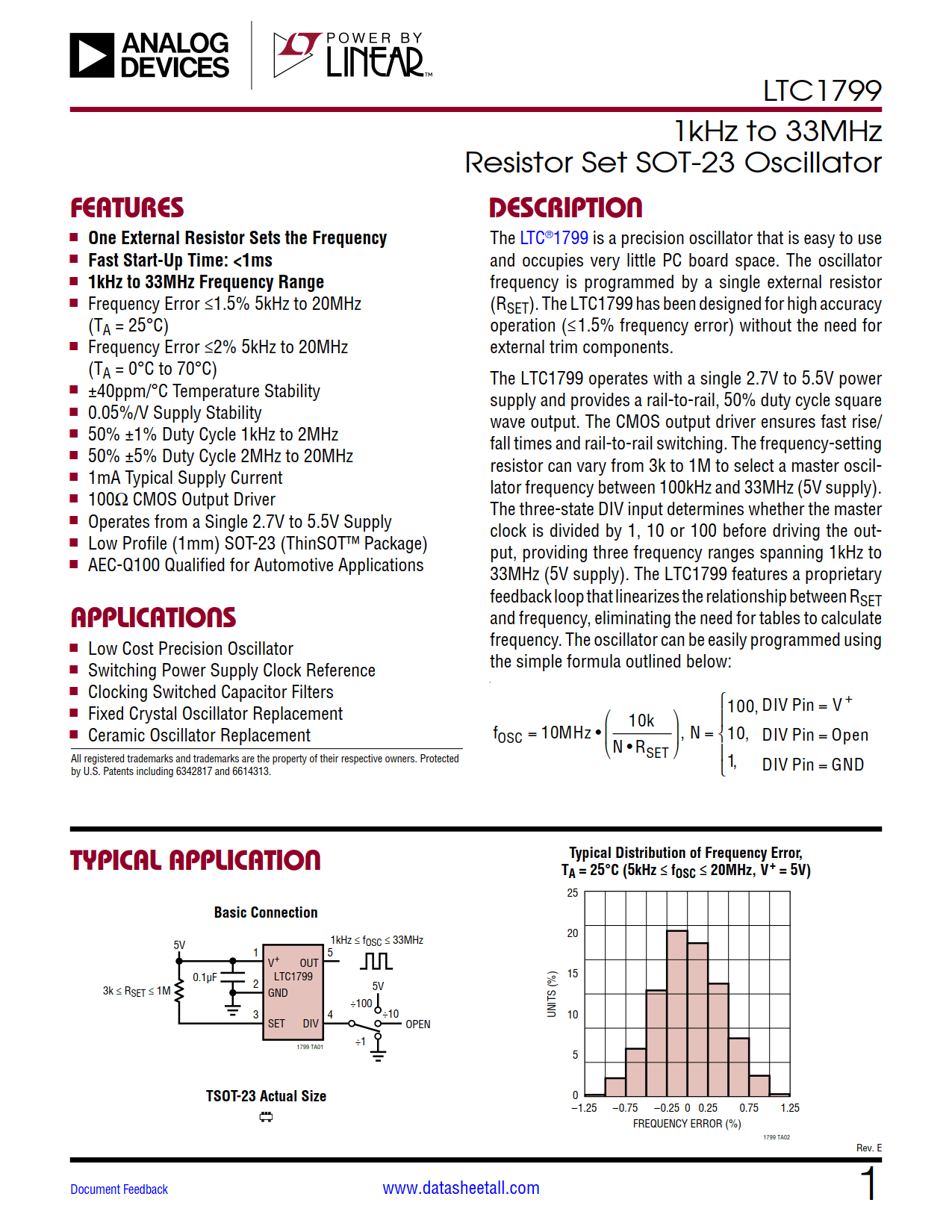
LTC1799 Datasheet
1kHz to 33MHz Resistor Set SOT-23 Oscillator

1kHz to 33MHz Resistor Set SOT-23 Oscillator
| Part No. | In Stock | Price | Packaging | SPQ | Marking | MSL | Pins | Temp Range | Package Description |
The LTC1799 is a precision oscillator that is easy to use and occupies very little PC board space. The oscillator frequency is programmed by a single external resistor (RSET). The LTC1799 has been designed for high accuracy operation (≤1.5% frequency error) without the need for external trim components.
The LTC1799 operates with a single 2.7V to 5.5V power supply and provides a rail-to-rail, 50% duty cycle square wave output. The CMOS output driver ensures fast rise/fall times and rail-to-rail switching. The frequency-setting resistor can vary from 3k to 1M to select a master oscillator frequency between 100kHz and 33MHz (5V supply). The three-state DIV input determines whether the master clock is divided by 1, 10 or 100 before driving the output, providing three frequency ranges spanning 1kHz to 33MHz (5V supply).
The LTC1799 features a proprietary feedback loop that linearizes the relationship between RSET and frequency, eliminating the need for tables to calculate frequency.